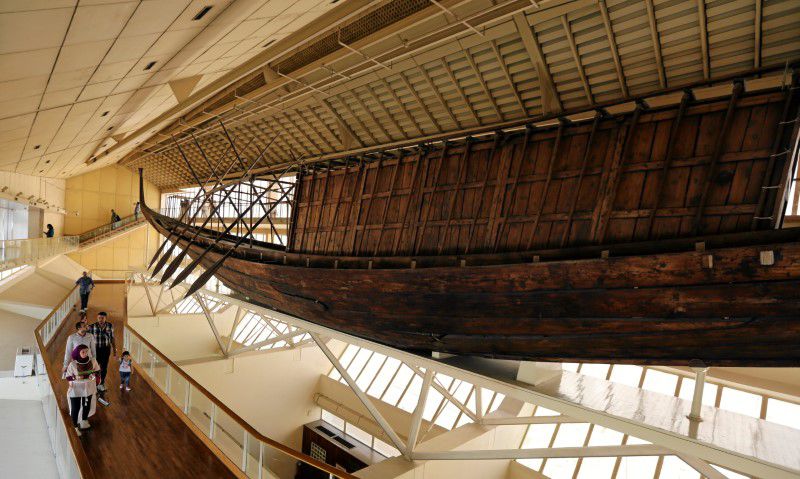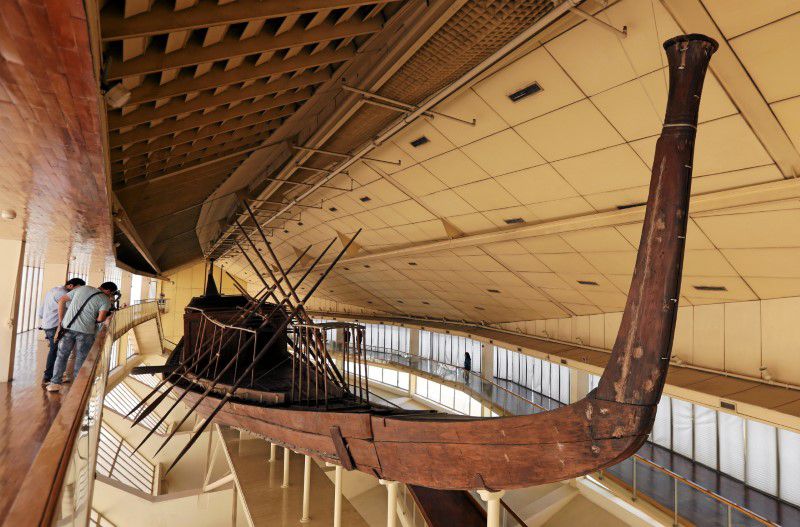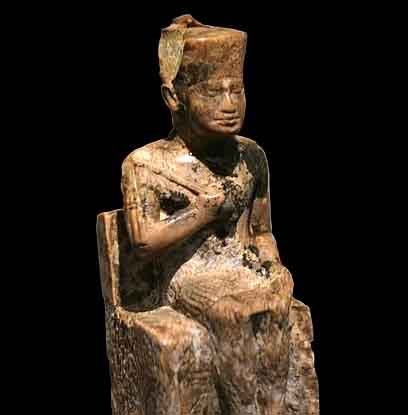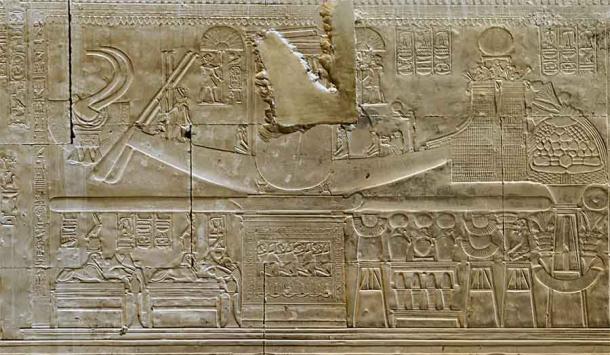Egypt pharaoh’s ‘solar boat’ moved to Giza museum

King Khufu’s Boat, an ancient vessel that is the oldest and largest wooden boat discovered in Egypt, has been painstakingly moved from its longstanding home next to the Giza pyramids to a nearby giant museum, officials said on Saturday.

The 4,600-year-old vessel, also known as the Solar Boat, was moved to the nearby Grand Egyptian Museum (GEM), due to be inaugurated later this year.
“The aim of the transportation project is to protect and preserve the biggest and oldest organic artefact made of wood in the history of humanity for the future generations,” the tourism and antiquities ministry said in a statement.
It took 48 hours to transport the cedarwood boat, which is 42 metres (138 feet) long and weighs 20 tons, to its new home. It arrived at the GEM in the early hours of Saturday, the ministry said.
The boat was transported as a single piece inside a metal cage carried on a remote-controlled vehicle imported especially for the operation, said Atef Moftah, supervisor general of the GEM project.

The vessel, discovered in 1954 at the southern corner of the Great Pyramid, has been exhibited for decades at a museum bearing its name at Giza Plateau.

Egypt says the Grand Egyptian Museum, which has been under construction intermittently for 17 years, will contain more than 100,000 artefacts when it opens.
Robotic Arms, Solar Winds
The solar boat is not only the oldest but also the largest wooden boat ever discovered in ancient Egypt.
Measuring 42 meters (138 feet) in length, this 20-ton vessel was carved from cedarwood. One of the major concerns for Egyptian authorities, somewhat ironically, was figuring out how to move the ancient vessel.

The Egyptian ministry explained in their press release that the primary goal of the transportation project was to “protect and preserve the biggest and oldest organic artefact made of wood in the history of humanity for the future generations.”
It was eventually moved to its new home in Cairo within a secure metal cage, “on a remote-controlled vehicle,” that was custom built for the job in Belgium.
According to the BBC, the Egyptian ministry said the relocation operation began late Friday night and that it took “10 hours” to install the iconic ancient artwork in its new home.
Nothing New Under The Sun?
The Kings of Ancient Egypt were buried within royal burial chambers, and solar boats such as this one were entombed with their ruler and were thought of as functioning, magically-powered devices that were essential for safely transporting that ruler’s soul in the afterlife.
While Egyptian rituals were complex and multi-faceted, changing from one Kingdom to the next, the solar boat represented the fundamental concept that the King “was” the Sun’s actual divine consort on Earth. The cycle of the Sun, therefore, was a highly visible manifestation of the power of the ruler, without which it was feared new plant, animal and human life couldn’t exist.

While this example of a solar boat was commissioned by a Fourth Dynasty monarch who ruled during the Egyptian “Old Kingdom”, the concept of a “Sun vessel” is not unique to that culture. The idea of a “solar barge” or “Sun boat,” carrying the Sun across the sky appears in many polytheistic religions.
And what is perhaps “coolest” about ancient solar boats is that, in a quirk of history which Elon Musk would love, they reflect the modern concept of electrically powered transportation, being powered by clean solar energy.
A New Egyptian Vision
The Grand Egyptian Museum, where the boat is now permanently located alongside many of the ancient king’s artefacts, will be inaugurated later this year after over 17 years in construction.
Planned to contain more than 100,000 artefacts when completed, the GEM, which is located just outside of Cairo on the Giza Plateau, is being hailed as “the new crown jewel of Egypt.”

While the GEM might be a jewel in Egypt’s crown, it also represents the largest and most modern museum experience in the world. Thus, this splendid new structure will hold deep appeal and attract history lovers from all over the planet. When it opens it will, without doubt, become the next “ancient must-see,” and you can learn more about the journey of the GEM, from conception to near completion, here.





